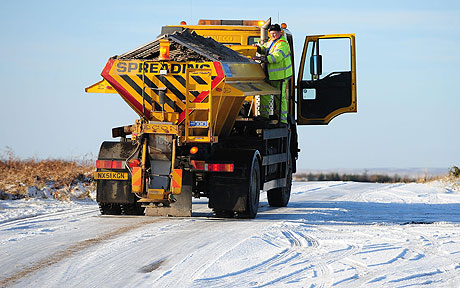While few can argue with its aesthetic appeal, snow has the potential to bring the whole country to a grinding halt. This is good news for school kids, as they are usually treated to a day off where they can have fun with friends and frolic in the snow. But what about the rest of the country?

Well, if the general public can’t get to work and businesses don’t open, the economy takes a significant hit. In 2010/11, when the UK suffered its coldest winter for 31 years, insurance group Royal Sun Alliance said the economy would lose £1.2bn a day because of the snow.
When the temperatures are cold enough for snow, they are usually cold enough for ice as well. This can also wreak havoc with the UK’s transport network, which either shuts down completely or becomes incredibly precarious.
The public are typically given warnings not to travel unless absolutely essential, but this isn’t always possible, especially if the adverse weather causes more ill health and injuries. Treacherous or even inaccessible roads mean that the emergency services struggle to provide lifesaving aid to the population.
For these reasons, the importance of road gritting cannot be underestimated. Before freezing temperatures are forecast, specialist vehicles will spread salt on major routes, which should prevent ice from forming. If snow does settle, clearance vehicles are also on hand to lessen the impact of hazardous wintery weather.
But how does road gritting work? When is the best time to grit the roads and what techniques are used to predict ice and snow? Here to explain is De-Ice, a leading supplier of gritting and snow clearance services in the UK.
How does Road Gritting Work?
Road gritting works by spreading rock salt, which stops water from freezing until -6º to -8ºC, out of the back and sides of a specialist vehicle. The driver can control the rate and speed at which salt is spread via an electronic system inside the vehicle’s cab. Depending on the road and weather conditions, it is possible to adjust the width and angle of salt delivery too.
Salt spreading is also known as road gritting because sometimes a salt/grit mix will be used to break up thick ice and provide more traction in particularly harsh weather.
When is the Best Time to Grit the Roads?
It is best to spread salt before low temperatures set in, as water won’t be given a chance to freeze. However, a damp surface is also advantageous since the salt will stick to the road or pavement quickly. If the road is already icy, road gritting is not as effective.
What Techniques are used to Predict Ice and Snow?
In addition to the weather forecast, road gritters can use the latest GPS technology to receive local and national predictions about where ice will form. These vehicles also feature sensors, which measure the road and air temperature as well as rain and salt levels.
For more information about road gritting, don’t hesitate to get in touch with experts like De-Ice. If you contact De-Ice then you will find they have the knowledge and expertise, built up over many years, to make a real difference to any road gritting, snow and ice clearance tasks that you will likely have to deal with.




